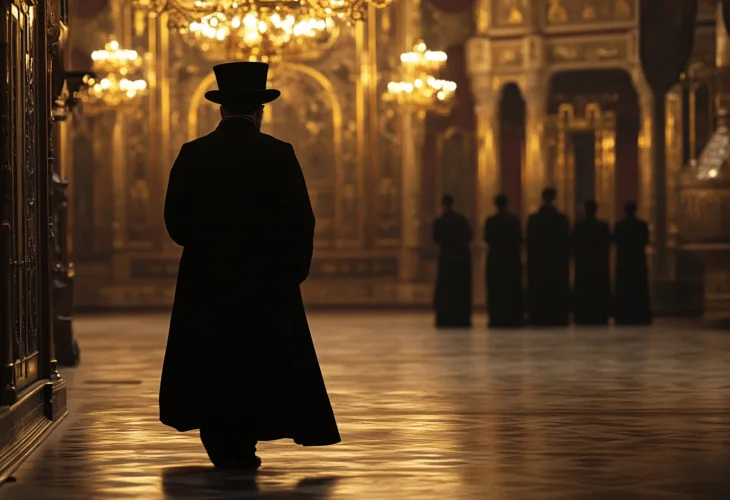Torah Personalities
The Palace of the Poor: How Rabbi Yisrael of Ruzhin Reigned with Dignity
In 19th-century Ukraine, a Hasidic leader built a royal court to uplift the spirit of his people—offering more than charity, he offered majesty

From Mud to Marble: A Villager Meets Royalty
In 1820 (5580 in the Hebrew calendar), a Jewish boy named Yisrael Baer was born in a small village in the Zhitomir region of Ukraine. Life was hard. One-third of the village's population was Jewish, but poverty was rampant. Homes were made of aging timber, patched with rags, lacking kitchens, and equipped with shared outdoor toilets. Streets were unpaved and muddy most of the year. Most Jews earned a living through small-scale trading, working tirelessly for meager returns.
Fast forward a few years, and this same Yisrael Baer found himself entering a magnificent estate. He passed through a stone wall, walked down a paved path, and beheld a sprawling palace with grand towers on one side and the servants’ quarters on the other. Ahead stood a luxurious reception hall with gilded doorframes, beyond which lay a manicured garden with fountains and an enormous banquet room filled with Chinese porcelain, mirrors, and the aroma of rich foods. Horses neighed in the distance.
Had he stumbled upon the estate of a nobleman or royal heir? No. He had arrived at the court of his Rebbe, Rabbi Yisrael of Ruzhin. Reverently called “The King of Israel in Ruzhin,” this Hasidic leader’s palace became a spiritual and emotional haven for Jews across the region.
Royalty with a Purpose: Why the Rebbe Lived in Splendor
To outsiders, especially members of the Haskalah (Jewish Enlightenment) movement, Rabbi Yisrael’s lifestyle was puzzling, even offensive. Was he a prince? Why was he surrounded by such luxury? Wouldn’t it be better to distribute the wealth to the poor?
But those critics misunderstood the deeper purpose of the court. Rabbi Yisrael of Ruzhin gave charity generously, but he couldn’t eliminate poverty. What he could do was give the Jewish people dignity. For the countless Jews who lived under persecution, in fear of their Christian neighbors, and in homes barely standing, his court was a kingdom of their own. It reminded them that they, too, had a source of pride, honor, and majesty.
Every Shabbat, crowds gathered to see the Rebbe. Dressed as a Ukrainian noble, he would deliver divrei Torah (words of Torah) in an opulent golden hall, surrounded by mirrors and candles. Yet this grandeur wasn’t self-indulgent. He barely ate or slept, often wearing shoes without soles (though they were covered in gold), so he still felt the cold earth. It was all for the sake of the people.
Dozens of Jews lived on the estate, some as Torah scholars and others simply as poor villagers drawn into the shelter of the Rebbe’s compassion. They received not only financial help but also emotional refuge, a reminder that Jewish pride and Divine royalty still endured.
Exile, Rebirth, and the Legacy of Ruzhin
In 1838 (5598), Rabbi Yisrael was arrested by the authorities on suspicion of involvement in the execution of informers. He was imprisoned but eventually escaped, thanks to his devoted Hasidim who bribed the guards. Fleeing to Austro-Hungary, he rebuilt his court in the town of Sadigura, where his presence once again became a life force for Jews of the region.
There, the Ruzhin court blossomed anew, continuing to serve as a beacon of dignity, Torah, and support. Over time, the Hasidic dynasty of Ruzhin transformed into the Sadigura dynasty, which still exists to this day.
Rabbi Yisrael of Ruzhin was neither a prince by birth nor a nobleman by title. To his followers, though, he was royalty of the highest order: a spiritual king who ruled not through power or wealth, but through compassion, Torah, and vision.

